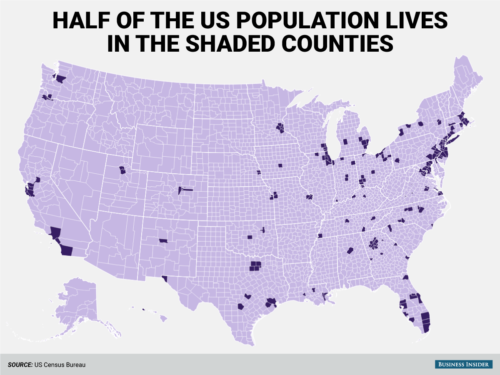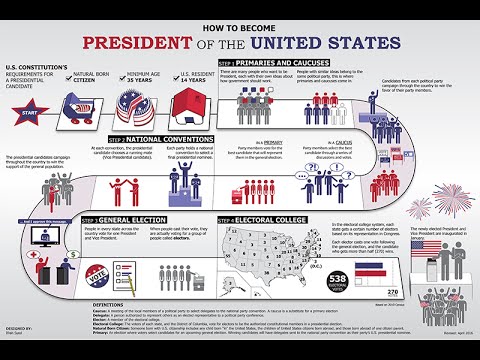An election for president of the United States happens every four years on the first Tuesday after the first Monday in November. The next presidential election will be November 3, 2020.
The election process begins with primary elections and caucuses. These are two methods that states use to select a potential presidential nominee.
In general, primaries use secret ballots for voting. Caucuses are local gatherings of voters who vote at the end of the meeting for a particular candidate. Then it moves to nominating conventions, during which political parties each select a nominee to unite behind. During a political party convention, each presidential nominee also announces a vice presidential running mate. The candidates then campaign across the country to explain their views and plans to voters. They may also participate in debates with candidates from other parties.
During the general election, Americans go to their polling place to cast their vote for president. But the tally of those votes—the popular vote—does not determine the winner. Instead, presidential elections use the Electoral College.* To win the election, a candidate must receive a majority of electoral votes. In the event no candidate receives a majority, the House of Representatives chooses the president and the Senate chooses the vice president.
The presidential election process follows a typical cycle:
- Spring of the year before an election – Candidates announce their intentions to run.
- Summer of the year before an election through spring of the election year – Primary and caucus debates take place.
- January to June of election year – States and parties hold primaries and caucuses.
- July to early September – Parties hold nominating conventions to choose their candidates.
- September and October – Candidates participate in presidential debates.
- Early November – Election Day
- December – Electors cast their votes in the Electoral College.
- Early January of the next calendar year – Congress counts the electoral votes.
- January 20 – Inauguration Day
* Last week a Bill passed the Virginia House of Delegates and will be forwarded to the Virginia Senate to join a group of states pushing to have the popular vote count towards a presidential election and not the Electoral College votes.
If the bill is signed into law by Democratic Gov. Ralph Northam, Virginia will join 15 states and the District of Columbia in the agreement to have their electors cast their ballots for the presidential candidate who gains the most popular votes nationwide, instead of the statewide winner.
The compact would take effect after securing states with a combined 270 electoral votes, the number needed to elect the president. Virginia’s 13 electoral votes would bring the total to 209.
If we look at this map found on Twitter from Business Insider we can see exactly why the Framers of the Constitution allocated electoral responsibility to the states and not the popular vote. Remember we are part of “these” United States and dwell in a Republic.

